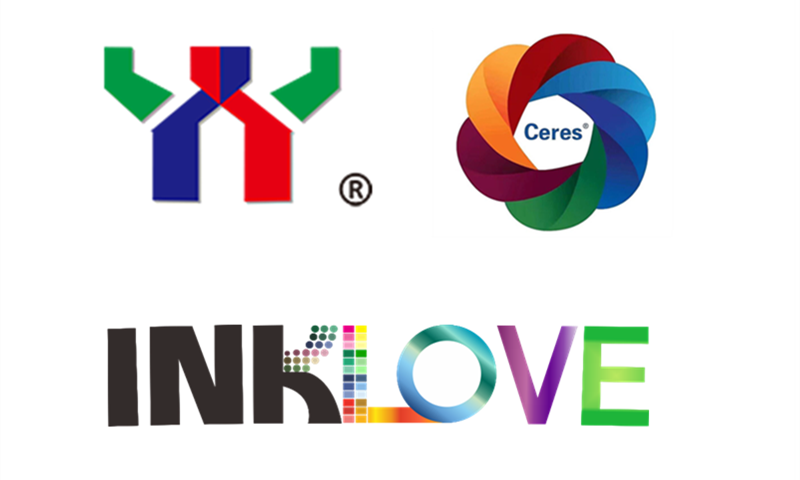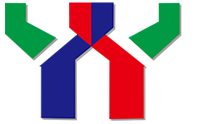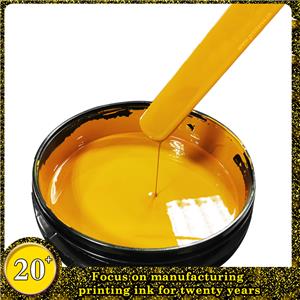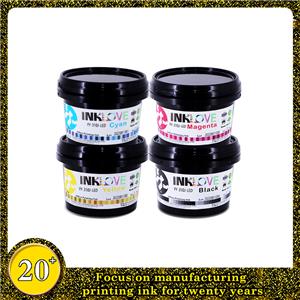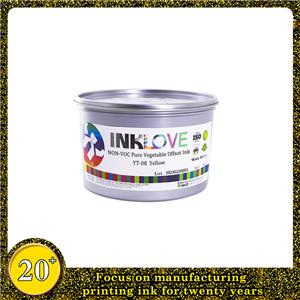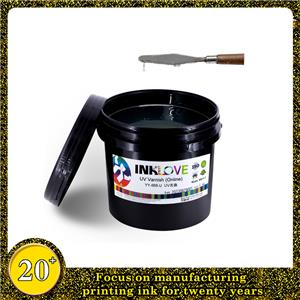Screen Printing Mirror Ink
The so-called "mirror ink" is a metallic screen printing ink, which is a solvent volatile type. It is made of plastic resin mixed with special metal color powder and used for printing on transparent plastic sheets (polyester, PC, PVC, PMMA). Etc.) On the back side, a metallic mirror printing effect is obtained, just like the effect of a normal mirror or a bronzing surface.
There are three types of Seiko mirror ink, which can be selected according to the printing material and purpose:
Mirror silver ink B: Only suitable for printing on polyester film (PET), with excellent mirror effect and strong adhesion to PET.
Mirror silver ink NO2: Printable polyester film (PET), PC, PVC, PMMA.
Mirror silver ink NO3: used for printing with mirror effect of other colors. It can be used in PET, PC, PVC, PMMA, in colors such as medium gold, red gold, and green gold.
The following is a brief description of the application of mirror ink in IMD technology and its process flow.
The printing step is completed in two stages, that is, the mirror ink is printed on the back of the sheet, and after it is completely dried, the IMD special ink is printed on the mirror ink, and the printing process is completed. The specific printing process of these two stages is as follows:
01 Mirror ink printing
1) Printing process parameters:
Screen: select 270-300 mesh/inch polyester screen
Screen: Solvent-resistant screen
Scraper hardness: 80°-85°
Dilution: Use T-1000 solvent to dilute (add it only when the viscosity becomes high during the printing process)
Drying: Heat and dry at 80°C for 10-15 minutes or 60°C for 15-20 minutes. Drying at room temperature takes about 20-30 minutes, but the mirror effect of natural drying is not as good as heat drying.
Net washing: T-15 or T-31 solvent

(2) Printing process skills:
a. Due to the different specific gravity of metal toner, plastic resin, additives, and additives, each component in the ink will be layered during storage, so it must be thoroughly stirred before use.
b. Due to the low viscosity of the ink, pay attention to selecting a screen with a higher mesh when printing, and a squeegee with a higher hardness, usually 80°, and appropriately reduce the printing pressure of the squeegee when printing.
c. In order to prevent the phenomenon of blocking the network, be careful not to print in a place with air circulation.
d. The net distance should be smaller, and the tension of the screen should be slightly lower.
e. This ink is more difficult to print than ordinary ink, it is best to choose experienced technicians to print.
f. In order to prevent the ink from absorbing moisture to make the mirror gloss low, avoid moisture during printing and storage, and dry at low temperature immediately after printing.
02 IMD ink printing
After the mirror ink is completely dried, a layer of IMD special ink (solvent type or light curing type) is evenly coated on the mirror ink. Generally use varnish or white ink to protect the mirror ink and prevent the high temperature injection liquid from washing the mirror ink, because the mirror ink is not resistant to high temperatures. This layer must have a certain thickness. If the printing is too thin to cover the mirror ink evenly, it can be printed twice. (The position of the injection gate is best printed twice or a layer of temperature-resistant ink. In addition, the correct design of the position and direction of the injection mold gate is also a very important factor, because the injection liquid at the gate position The temperature is the highest, the pressure is high, the impact is large, and the ink is easily washed away.) This layer of IMD special ink can be used either solvent-based such as Baolong Noriphan HTR, or UV ink such as Nuogu IMD special UV ink. The process parameters are as follows:
(1) Noriphan HTR printing process parameters:
Screen: 90-120 mesh/cm polyester screen
Screen: Solvent-resistant screen
Thinner: Noriphan HTR 090 thinner, Noriphan HTR 097 slow-drying agent, Noriphan HTR 097/003 slow-drying agent
The thinner is selected according to the temperature and humidity of the screen printing environment. All solvents can be mixed in different ratios to achieve the desired drying speed.
Noriphan HTR 097 is the most widely used. When printing fine lines, the slow-drying agent Noriphan HTR 097/003 can extend the drying time of the screen.
Drying: After drying in a well-ventilated tunnel dryer at 60-80°C, dry thoroughly in an IR oven at 90°C for 1-5 hours. The length of the drying time is based on the evaporation of the residual solvent. Sometimes the drying time is too long. Long, it will also increase the brittleness of the ink film and lead to cracking or flying oil.
Print Aquapress (water-based adhesive) HF-093 and dry it at 80°C for 5 minutes.
(2) Process parameters of Nuogu IMD special UV ink:
Screen: 120-180 mesh/cm pw polyester screen
Screen: Solvent-resistant screen with a tension of about 20N/CM
Additives: 073 solid accelerator, 100 thickener, 060 dot varnish
Drying: two 120 watts/cm UV curing medium pressure mercury lamps, curing speed 20 meters/about
Tracking: Autotype SC (water-based adhesive), dried at 80°C for 5 minutes.
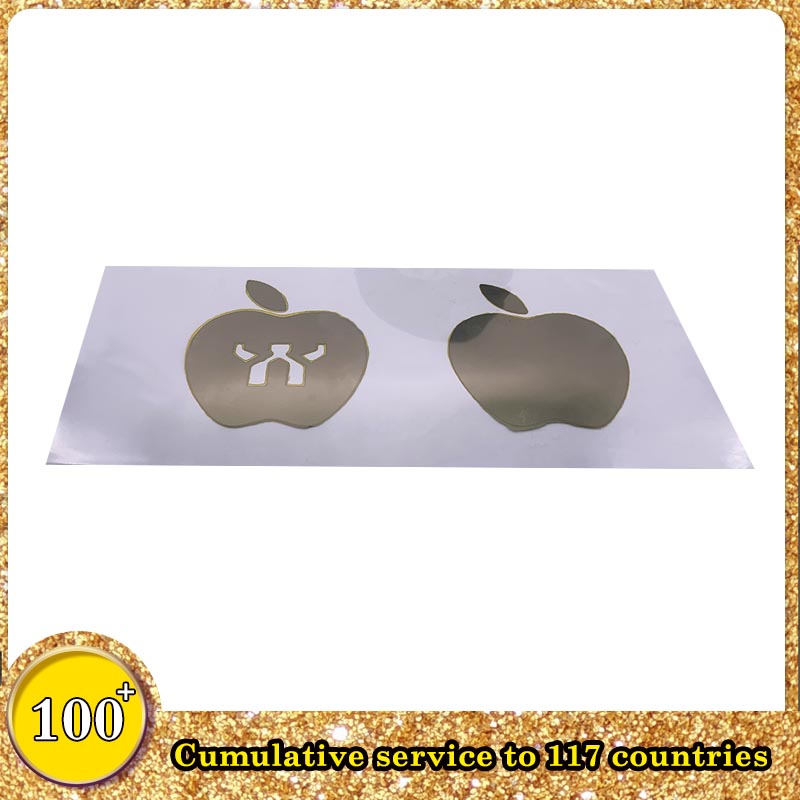
03 Molding and molding method
1. Since the bonding force between PC sheet + mirror ink + injection molding compound is less than that of PC sheet + injection molding material, the mirror ink cannot be printed completely, that is, it cannot be printed all the way to the edge, and it must be left. The margin of the edge of the PC sheet, so that the PC sheet and the plastic can be firmly combined, and the PC sheet and the injection plastic are firmly combined at the edge of the IMD workpiece, and the mirror ink inside will not be torn under the action of external force. The fastness of bonding with PC sheet and injection molding compound will not be affected by edge tearing. In order to ensure that the mirror ink does not crack during molding, and the PC does not delaminate (separate) during injection molding, in addition to the structure design of the graphics and text, the effective mirror ink area should be left outside of the effective mirror ink area. Design is also very important. For example, if an IMD workpiece with the following graphics is made, the usual process is:
The top edge of the mirror ink like this will have the following conditions: when the edge is bent, uneven or torn strongly, the edge will crack, and the entire mirror ink layer will be separated. If the molding die is improved, the PC workpiece after pre-compression molding will grow out of the mirror ink edge by 0.5mm, and the 0.5mm PC piece will just be integrated with the injection molding after injection, so that the edge of the sheet and the mirror surface can be avoided after injection. The separation of the ink greatly improves the yield, and the edges of the injection molded parts are smoother, and the finished product is more beautiful. As shown below:
2. If the structure of the molding die remains unchanged, follow the molding method in the normal IMD process.
04 Cut
Follow the shearing process in the normal IMD process.
05 Injection molding
For two different molding methods, there are two measures in the injection molding process.
1. If the molding is based on the above-mentioned first molding method, the structure of the injection mold should be improved with the structure of the molding mold, so that the injection mold is matched with the molding mold, and the others are injection molding processes in the normal IMD process.
2. If the forming mold and injection mold remain unchanged, they are produced according to the normal IMD process. After injection, the edge of the mirror ink is ultrasonically welded or thermally welded to ensure the bonding strength of the edge of the workpiece.
The application of mirror ink in IMD technology has further improved the application status of IMD products. This article hopes to give IMD manufacturers a reference role in the process of manufacturing IMD
